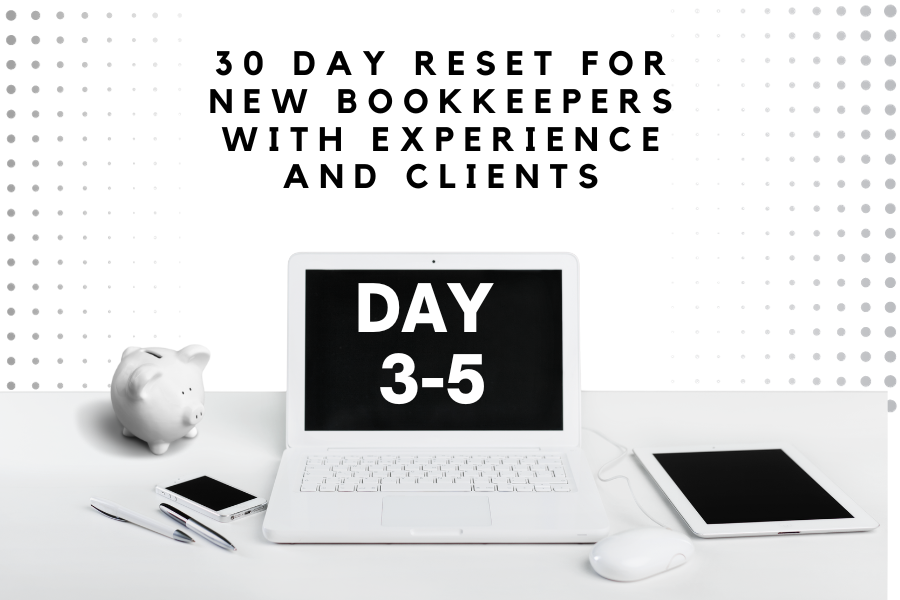DAY 3-5 of 30 Day Reset for New Bookkeepers: Understanding the Client’s Needs

Mastering the Core Bookkeeping Basics
We’re ready to immerse fully into the bookkeeping basics during these pivotal days of our skills reset program. Consider days 3-5 an intensive bootcamp bridging textbook concepts with real-world application.
My aim is equipping you with the key terminology, principles, and software skills serving as building blocks for a successful bookkeeping practice. Let’s sharpen those pencils and hit the books!
Revisiting Core Concepts and Vocabulary
While terms like accounts receivable, accounts payable, and general ledger likely roll off your tongue, it always helps to revisit definitions and cement working knowledge. Let’s review:
- Accounts Receivable (AR) – Money owed by customers for goods or services received
- Accounts Payable (AP) – Money owed to vendors and suppliers
- General Ledger – Central record organizing all business accounts and transactions
- Chart of Accounts – Master list of every account a business tracks
Now, onto the ever-important concept of double-entry booking:
Cultivating Double-Entry Mastery
Recording transactions across offsetting debit and credit accounts keeps ledgers balanced and ensures accuracy. This pillar cannot be overstated in importance.
Remember, increase asset and expense accounts with debits. Increase liability, equity, and revenue accounts with credits. When in doubt, recall the handy mnemonic “DEAD CLER” – Debits Expenses Assets Dividends / Credits Liabilities Equity Revenues.
Let’s reinforce double-entry booking with an example:
If a client sells $1000 of product and receives cash payment, you would book:
Debit Cash $1000
Credit Revenue $1000
Drilling examples will cement double-entry mastery until recall becomes second nature. Strive for speed and accuracy in application!
Customizing the Chart of Accounts
When setting up the all-important chart of accounts, think beyond generic expense categories in off-the-shelf accounting software. Thoroughly analyze how each client operates. Ask questions. Discuss their business processes and reporting needs.
Set up accounts and sub-accounts to match organizational structures, departmental divides, and managerial analysis preferences. Go more granular where advantageous to financial visibility. Remain flexible and don’t hesitate to adjust account classifications over time.
Molding Software to the Business
Forcing clients into one-size-fits-all software templates often backfires. Instead, mold the technology to match each organization’s workflows, inventory management needs, billing cycles, expense patterns, and other unique variables.
Develop custom reports and dashboards delivering data catered to drive profits rather than overwhelming with extraneous metrics. Reduce clutter hiding actionable insights.
We’ve covered foundational ground during this intensive three-day basics bootcamp! Let’s continue building on these core competencies. Still have questions? Reach out anytime. I’m here to provide guidance so you gain confidence on your evolving journey.
Looking Ahead
Up next, we’ll dive into crucial strategies around identifying client pain points, compartmentalizing key tasks, systematizing workflows, and implementing organizational structures primed for scalability.
I want you working SMARTER, not harder – streamlining administration so you free up capacity for growth. The time invested now honing fundamentals manifests exponentially over your career.
Let me know your biggest takeaway so far! Get some rest, because tomorrow we’ll start construing that efficient bookkeeping machine.
See you soon!
